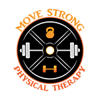Why Your Stretching and Foam Rolling Isn’t Working Part II
Mobility work and self-myofascial release aka foam rolling are valuable tools in any rehab or strength and conditioning program, but they are not the only tools.
Training your body to control this “new” mobility is key in order to use it and for the body’s nervous system to utilize it and access it.
Make sure to check out Part I of Why Your Stretching and Foam Rolling Isn’t Working HERE.
One thing I like to utilize with my clients after we have made a change via soft tissue work, mobility drills, and corrective strategies as mentioned in part I, is to implement loaded movements, but with a twist.
I like to incorporate slow eccentric movements into any strength training after improving one’s mobility and their control of that mobility.
Here are some examples:
Lower Body
Slow Eccentric Reverse Lunges
Slow Eccentric Goblet Squats
Slow Eccentric Lateral Lunges
Slow Eccentric Single Leg Deadlifts
Slow Eccentric Heel Raises w/ Knee Flexion
Slow Eccentric Kettlebell RDLs
Slow Eccentric Offset Reverse Lunges
Upper Body
Slow Eccentric Push-Ups
Slow Eccentric 1-Arm Dumbbell Bench
These are just a few options that I like to utilize when helping my athletes and clients when returning from an injury to help maintain an improvement in mobility after foam rolling, self-myofascial release, manual therapy, etc.
Foam rolling, stretching, self-myofascial release are all tools in any good strength and conditioning program, but they are not the only tools. Make sure to incorporate some motor control drills in a warm-up or superseded in your workout as shown in Part I and then also incorporate slow eccentrics into your training as well.



